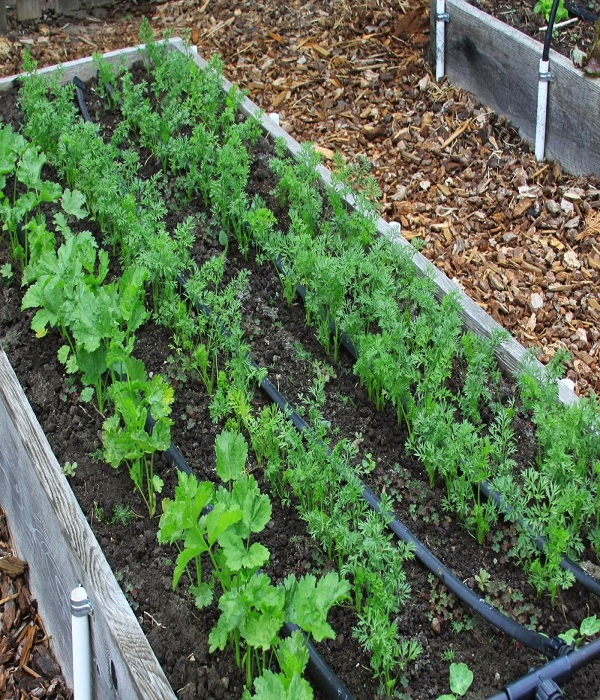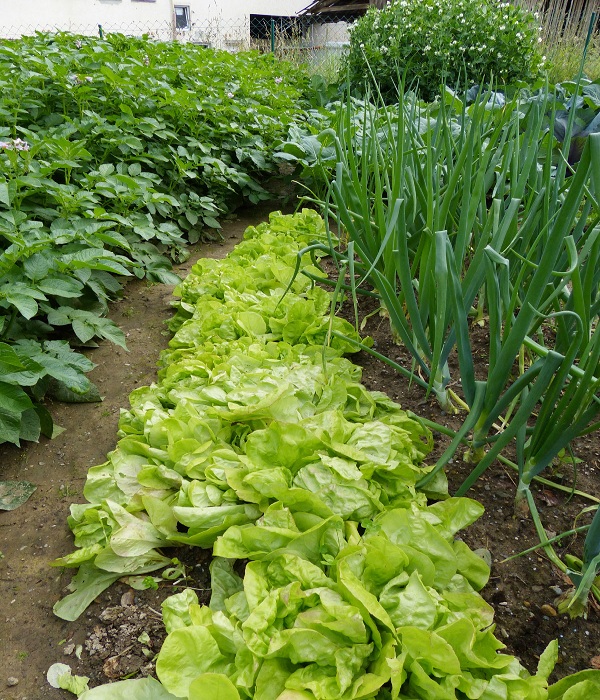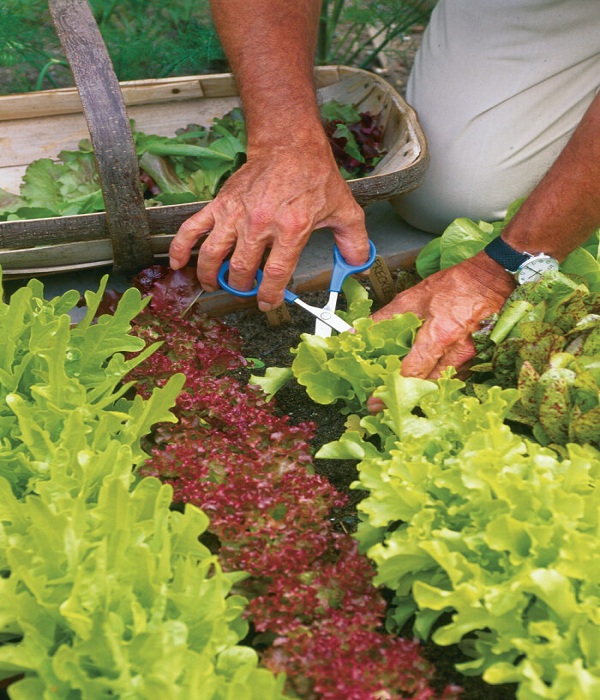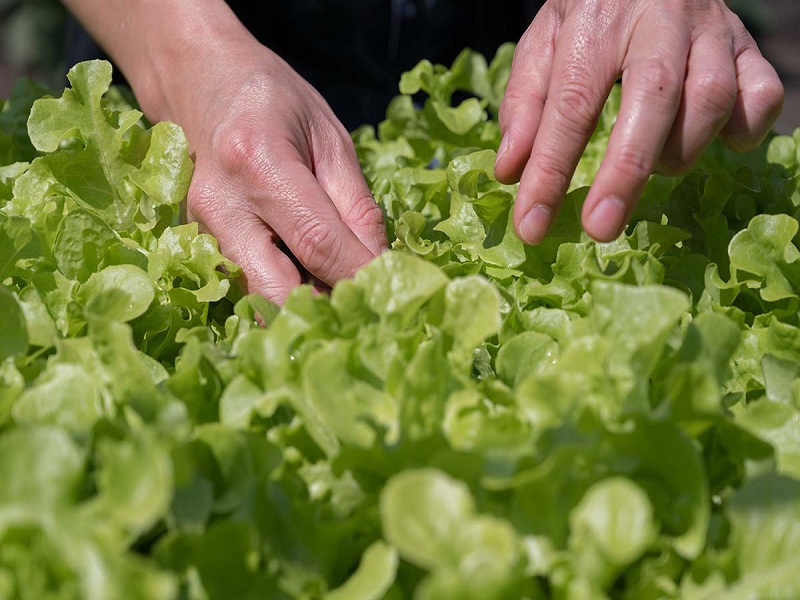The term “succession gardening” refers to a group of techniques that can increase your harvest from a single piece of land by a factor of two or three.
Careful planning according to crop variety, maturity dates, space, and timing makes succession planting ideal for people with a shorter growing season or restricted garden space.
The following are five methods to help you get the most out of your harvest:
Harvest and Plant
The harvest and sow method is one of the simplest succession planting techniques available. This method entails planting new crops once previous crops have done producing, and repeating this process as many times as possible. After you have harvested your plants, your garden beds should not be allowed to go into a dormant state for an extended period of time.
By alternating plantings of cool- and warm-season crops, this strategy yields excellent results.
For instance, sow lettuce and other cool-weather vegetables in the spring so that you can pick them in the summer. The row could use some new compost, and you could sow it with a plant that thrives in heat, like green beans or cucumbers. After these have stopped producing food, pluck off the plants and replant them with broccoli or kale to have a second harvest in the fall.
A useful tip is to start your summer crops indoors while you are still waiting for your spring crops to mature so that you may get a jump start on them. Harden off the seedlings a week before the crops you grow during the cool seasons are ready to be harvested. Planting your summer crop as soon as harvest season rolls around is quite acceptable. Repeat the process with your autumn plants as well.

Staggered Plantings
This strategy, which is also known as relay planting, is a good method for sustaining a continual harvest so that your crop does not come in all at once. Plant fewer seeds initially and continue to add additional seeds every few weeks rather than sowing the full row all at once in the spring.
By spreading out your harvesting, you can avoid having a glut of perishable goods at the end of the season.
Greens, bush beans, carrots, radishes, collards, peas, beets, chard, and turnips are all excellent options for staggered planting.
If you want to save yourself some time, it’s a good idea to write down when you plan to plant things. To stay on top of your busy schedule, set up email reminders or utilize your phone’s alarm.

Intercropping with Companion Plants
Plants that are not direct competitors are often planted together in a polyculture method known as “companion planting.”
Companion planting is best known as a natural method for controlling pests, increasing pollination, enhancing flavor, improving soil fertility, and providing a habitat for beneficial insects. However, it is also an excellent method for maximizing the use of garden space and increasing crop production.
Intercropping enables you to grow two or more plants in the same place, which enables you to take advantage of companion planting and succession planting at the same time. This strategy involves considerable planning, but it can be executed in a number of different ways, including the following:
- Pick crops that mature at different times of the year
By using this strategy, you will be able to cultivate two plants at the same time, harvesting one in order to make room for the other to continue growing. Radish and pepper make a great combination, for instance. As radishes have a rapid growth rate and can be harvested in as little as three to four weeks, we will take them from the soil before the pepper plant gets big enough to cast a shadow on them.
- Grow shallow and deep-rooted crops together
You can prevent plants from competing with one another for nutrients in the soil by selecting plants according to the depth of their root systems.
For instance, the deep taproot of a beet goes wonderfully with the shallow roots of lettuce. Optimize your vegetable garden space without having one type of plant take over by making sure the plants’ root systems are developing at diverse depths.
Plant tall crops with plants that require some shade
You can make use of the height and bushiness of sun-loving plants by matching them with varieties that prefer partial shade.
You may get the most out of the morning sun by positioning your cabbage plants to the east, while your tomato plants can shield them from the afternoon sun by facing west.
The Three Sisters, a grouping of three crops—sweet corn, climbing beans, and winter squash—is a classic example of companion intercropping.
Mounds of rich soil 20 inches in diameter and 12 inches high were constructed by Native Americans around 5,000 years ago using this method. Beans and squash are sown around the corn once it reaches about 6 inches in height.
Corn provides support for the beans as they climb, beans fix atmospheric nitrogen to increase soil fertility, and squash, which spreads out along the ground, prevents weeds and retains soil moisture.
Tip: It’s important to remember that intercropping with companion plants is a more advanced succession planting approach. Visualize your garden’s layout, including plot size, plant arrangement, walkways, and stepping stones, before you actually start planting seeds in the ground.
You can either draw it out on paper or use a garden layout tool like this one to get the job done quickly and easily. It’s possible to fit as many as 33 different plant species into a 15′ by 13′ area, depending on how intricate your design is.

Multiple Harvest Dates for the Same Crop
When multiple varieties of the same crop are planted, harvesting can continue even if one variety is behind schedule. Try to find harvests that can be harvested at different times of the year.
A notable example of this is the potato, which can mature in anywhere from 75 to 90 days for Yukon Gold varieties, 95 to 110 days for French Fingerling varieties, and 120 to 135 days for All Blue varieties. You might also try combining early season, everbearing, day-neutral, and short-day strawberry varieties to see what results you get. Alternatively, short day, middle day, and long day onions.
There is no need to keep track of dates or make personal reminders for yourself if you implement this technique since the best part about it is that once you’ve determined what varieties to plant, you sow it all at once and harvest it as it ripens.
You’ll be able to experience a variety of distinct tastes as well as culinary applications with the same crop, such as cherry tomatoes for salads, Roma tomatoes for sauces, and beefsteak tomatoes for slicing. Cherry tomatoes, Roma tomatoes, and beefsteak tomatoes are all types of tomatoes.
A useful tip is to check the seed packet to determine the number of days needed for the plant to mature in your particular growing location.

Cut and Come Again
Choose cut-and-come-again vegetables if you want a steady stream of harvests throughout the entire growing season. This is likely the easiest approach to achieve this goal.
Cutting only a few of the bigger outer leaves and leaving the smaller interior leaves to mature allows a rosette-forming plant to be harvested again. Good rosette plants include lettuce, bok choy, celery, chicory, kale, spinach, Swiss chard, and turnip greens.
You can cut these plants down to the earth without worrying about them dying: asparagus, chives, cress, dandelion, and scallion.
As a rule of thumb, after taking cuttings, you should always water the plants thoroughly to help them recover and stimulate development. After each harvest, incorporate some new compost into the soil all around the plants to assist restore their energy stores.

Additional Successive Planting Tips
When harvesting and planting new plants, it is important to aerate the soil and add additional compost.
- When working with a smaller garden space, square foot gardening enables you to cultivate a vegetable garden that is both compact and thickly planted despite its size. If you have plenty of room, planting your crops in wide rows will allow you to produce a greater yield.
- Maintain a record of what you planted and where you planted it throughout each growing season. Always be sure to rotate your crops every year to protect your plants from fungus and insects, lessen the amount of soil that is lost to erosion, and increase your land’s fertility as well as your harvest the following year.
- When planting seeds in the sweltering heat in the middle of summer, you should put them at a depth that is twice as great as you would in the spring. It is imperative that the soil be kept continually moist in order to prevent the new shoots from dying.
- Ensure that you have a sufficient supply of seeds to last you through the remainder of the growing season. To save time and limit the number of unwanted seedlings that need to be thinned, you can either buy seed tape or make your own.

